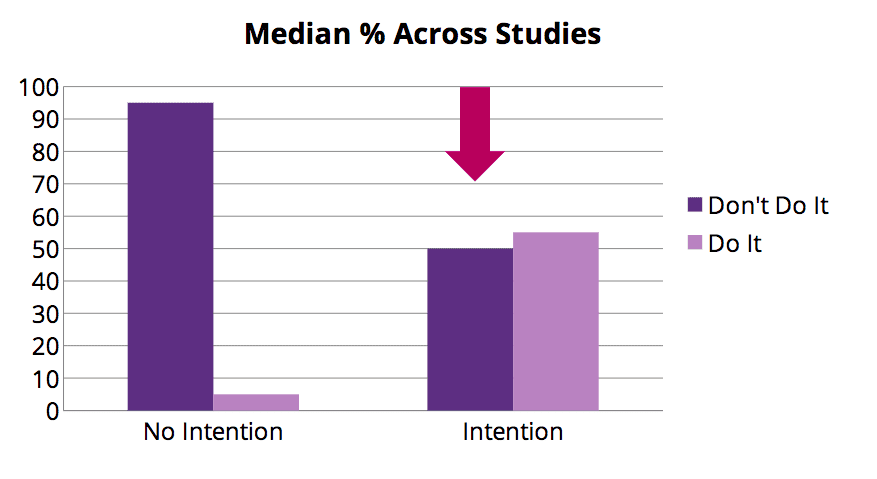As important as it is to use a growth mindset for culture change — to embrace failures and learn from mistakes — there’s a real danger to thinking the hard part is over.
That’s because the research into habit formation has shown over and over that the conventional wisdom is wrong: Buy-in alone isn’t enough to change behavior. (Remember: Culture is shared everyday habits.)
If leaders rely on just their priorities, they may switch things up in the short term, but will almost certainly revert to old habits in the long run. As we detail in our new white paper, “How Culture Change Really Happens,” sustainable solution must involve a keen focus on supporting the right habits.
The knowing-doing gap
Awareness alone can’t effect change because of something psychologists call the “intention-implementation gap.” Sometimes it’s also known as the “knowing-doing gap.” In repeated studies, scientists have found little to no correlation between a person’s intention to do something and their actually doing it.
The below chart shoes that even with an intention to act, only slightly more people actually follow through.
 (Gollwitzer & Sheeran 2006)
(Gollwitzer & Sheeran 2006)
According to the research, wanting to do something just isn’t that motivating on its own.
It’s not hard to see why. Daily life presents numerous distractions, unforeseen obstacles, inhibitions, absentmindedness, and general busyness. People may feel enormous energy around a particular goal one moment, only to run into another problem and forget about the first goal entirely. Or, when push comes to shove, they may dismiss its importance just to get by.
The NeuroLeadership Institute looks at this research with a great deal of optimism, since it suggests that people do want to make a change; they just tend to lack the supporting systems to help them keep their priorities in mind.
How to close the gap
NLI’s research around behavior change has shown that two other components must assist priorities: habits and systems.
Habits are the automatic, non-conscious behaviors we perform on a regular basis: brushing our teeth, stopping for a coffee, and so on. Systems are the physical or mental cues — the scaffolding — that reinforce our habits.
Someone who wants to build the habit of running before work, for instance, may implement the system of laying out their sneakers and clothes the night before. The system helps reinforce the habit by making it easier to perform.
Leaders looking to create culture change can rely on the same scientific wisdom. The way to create a new culture is to remember that culture is merely shared everyday habits. By changing (and supporting) people’s habits, leaders can tilt their entire organization in the desired direction.
This article is the third installment in NLI’s new series, Culture Change: The Master Class, a 6-week campaign to help leaders understand the science behind creating — and sustaining — culture change.
[action hash=”1c967ecd-f614-4b3d-a6f1-a14c6ec523bc”]






